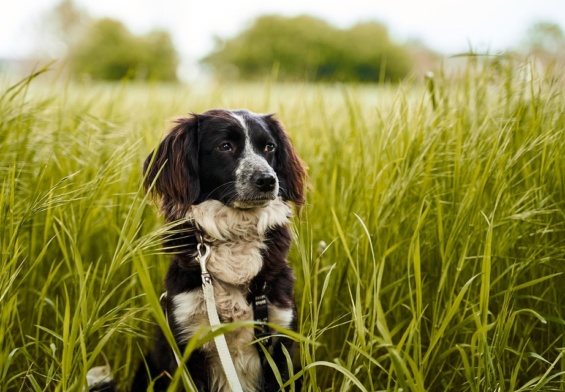Dry Dog Food Showdown: Who Comes Out on Top in April 2025?
Introduction
By April 2025, the pet food industry has evolved into a dynamic arena where innovation meets necessity. With 65% of U.S. households owning pets and growing global demand for sustainable, nutritious options, dry dog food is no longer just about kibble—it’s about science, ethics, and customization. This showdown evaluates top brands leading the charge, balancing cutting-edge nutrition, eco-conscious practices, and affordability. Let’s dive into which brands are redefining the bowl in 2025.
Evaluation Criteria
- Ingredient Quality: Prioritizing whole proteins, non-GMO ingredients, and avoidance of fillers.
- Nutritional Value: Tailored formulas for breed size, age, and health conditions (e.g., allergies, joint health).
- Sustainability: Carbon-neutral production, recyclable packaging, and ethical sourcing.
- Innovation: Use of novel proteins (insect, lab-grown), AI-driven customization, or CRISPR-enhanced nutrients.
- Affordability: Competitive pricing amid rising global supply costs.
- Consumer Trust: Recall history, vet endorsements, and customer reviews.
The Contenders
-
Royal Canin
- 2025 Update: Launched breed-specific formulas using genetic testing kits to customize diets.
- Pros: Vet-recommended, clinically proven results for sensitive stomachs.
- Cons: Premium pricing; slower adoption of alternative proteins.
-
Hill’s Science Diet
- 2025 Update: Partnered with AI startup VetGen to create real-time dietary adjustments via wearable pet tech.
- Pros: Strong R&D, excellent for managing chronic conditions.
- Cons: Limited eco-friendly packaging options.
-
Blue Buffalo
- 2025 Update: Introduced “Earthborn Essentials,” a line with cricket protein and 100% compostable bags.
- Pros: High palatability, affordable premium segment.
- Cons: Recent recall in late 2024 impacted trust.
-
Orijen
- 2025 Update: Achieved carbon-neutral certification; new “Freeze-Dried Raw Inclusion” kibble.
- Pros: Biologically appropriate, high meat content.
- Cons: Expensive; limited availability outside North America.
-
Wild Earth
- 2025 Update: Expanded insect-protein line, now offering omega-3-rich algae supplements.
- Pros: Eco-friendly, ideal for dogs with meat allergies.
- Cons: Niche market appeal; lower protein content.
- Acme Pet Foods (Hypothetical Innovator)
- 2025 Update: CRISPR-edited yeast to optimize nutrient absorption; lab-grown chicken kibble.
- Pros: Revolutionary sustainability, hypoallergenic.
- Cons: Newcomer with limited long-term studies.
| Head-to-Head Comparison | Brand | Sustainability | Innovation | Nutrition | Price | Trust |
|---|---|---|---|---|---|---|
| Royal Canin | ★★★☆☆ | ★★★★☆ | ★★★★★ | $$$$ | ★★★★★ | |
| Hill’s Science | ★★☆☆☆ | ★★★★★ | ★★★★☆ | $$$$ | ★★★★☆ | |
| Blue Buffalo | ★★★★☆ | ★★★☆☆ | ★★★☆☆ | $$$ | ★★★☆☆ | |
| Orijen | ★★★★★ | ★★★★☆ | ★★★★★ | $$$$$ | ★★★★☆ | |
| Wild Earth | ★★★★★ | ★★★★☆ | ★★★☆☆ | $$ | ★★★☆☆ | |
| Acme Pet Foods | ★★★★★ | ★★★★★ | ★★★★☆ | $$$$ | ★★★☆☆ |
Top Picks
-
Winner: Orijen
Orijen clinches the top spot with its carbon-neutral certification and nutrient-dense formulas, though its price point may deter some. Its freeze-dried raw kibble appeals to pet parents seeking a wolf-like diet without the environmental guilt. -
Runner-Up: Acme Pet Foods
A dark horse, Acme’s CRISPR-enhanced yeast and lab-grown proteins set a new standard for sustainability, though its novelty requires cautious optimism. - Best for Health Management: Hill’s Science Diet
Seamless integration with AI tech makes it ideal for aging pets or those with chronic conditions.
Conclusion
The 2025 dry dog food market is a blend of tradition and revolution. While Orijen leads with holistic excellence, brands like Acme and Wild Earth are reshaping what’s possible. Always consult your vet and consider your dog’s unique needs—because in the end, the best food is the one that keeps your tail wagging.
Final Tip: Watch for regulatory updates, as the Global Pet Food Alliance plans stricter sustainability labeling by Q3 2025. Stay informed, stay proactive! 🐾





